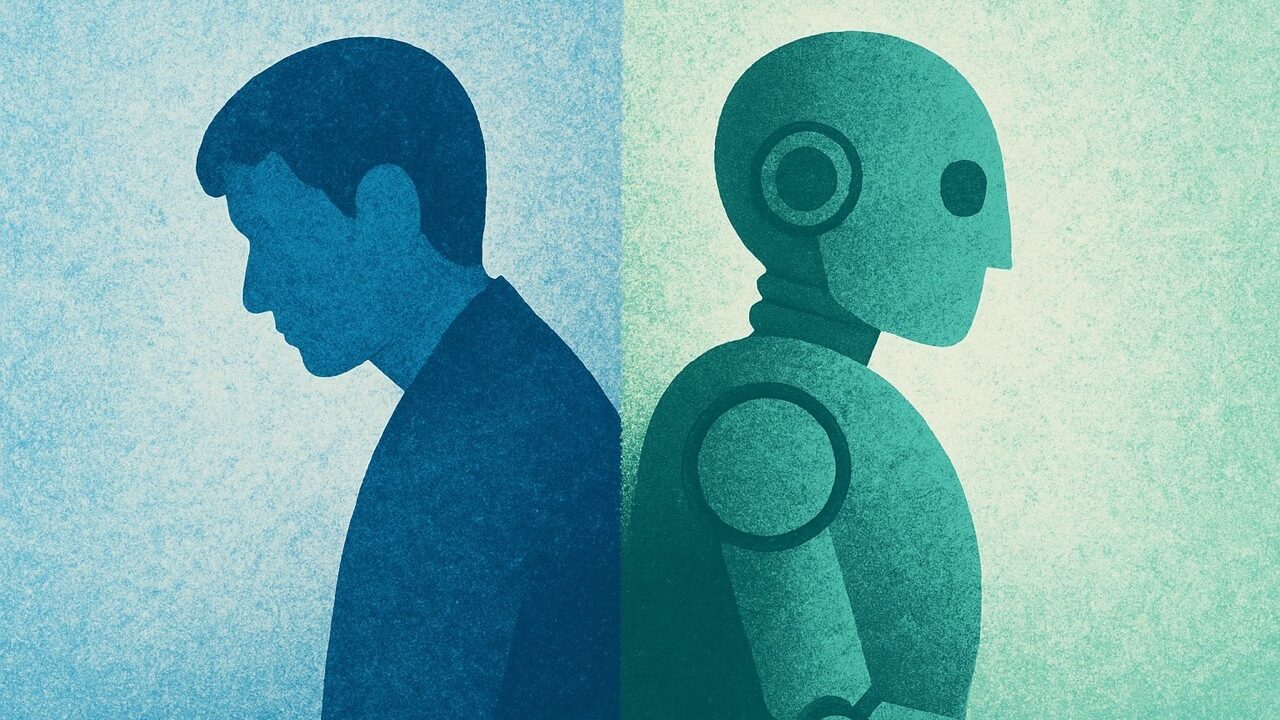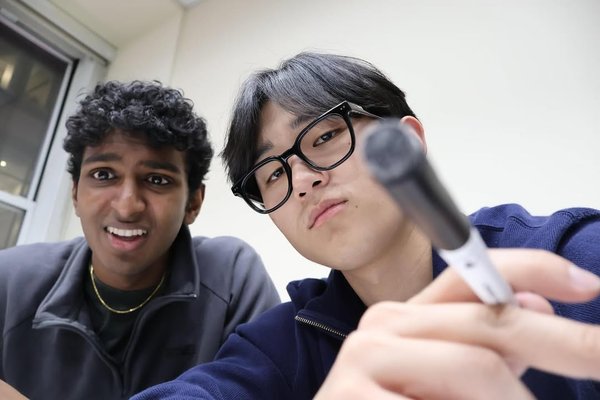AI Cyborg Revelation? The Story of Ai-Da, the First Robot Artist to Sell Million-Dollar Paintings
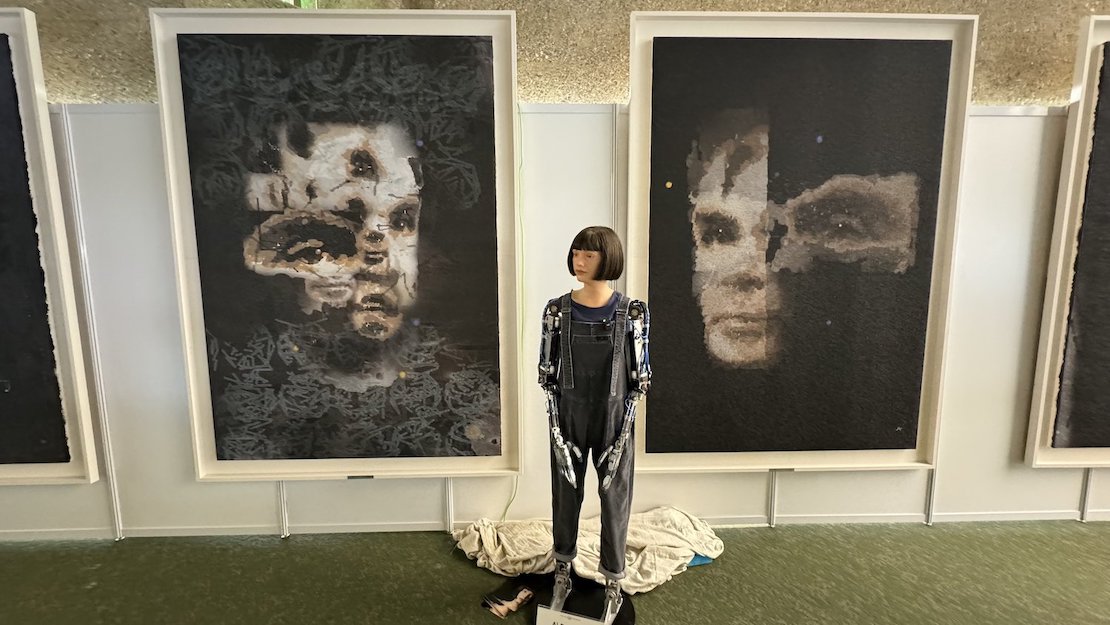
Artificial Intelligence
4-minute read
Last month, at a launch event themed "We Robot," Elon Musk showcased his company's humanoid robot "Optimus," claiming it could perform all conceivable household chores for lazy humans. "Optimus" even served as a receptionist at the event, mixing drinks and playing rock-paper-scissors. Despite later revelations that it was remotely controlled, the demonstration still skyrocketed expectations for humanoid robots to an all-time high, highlighting the ongoing technological evolution.
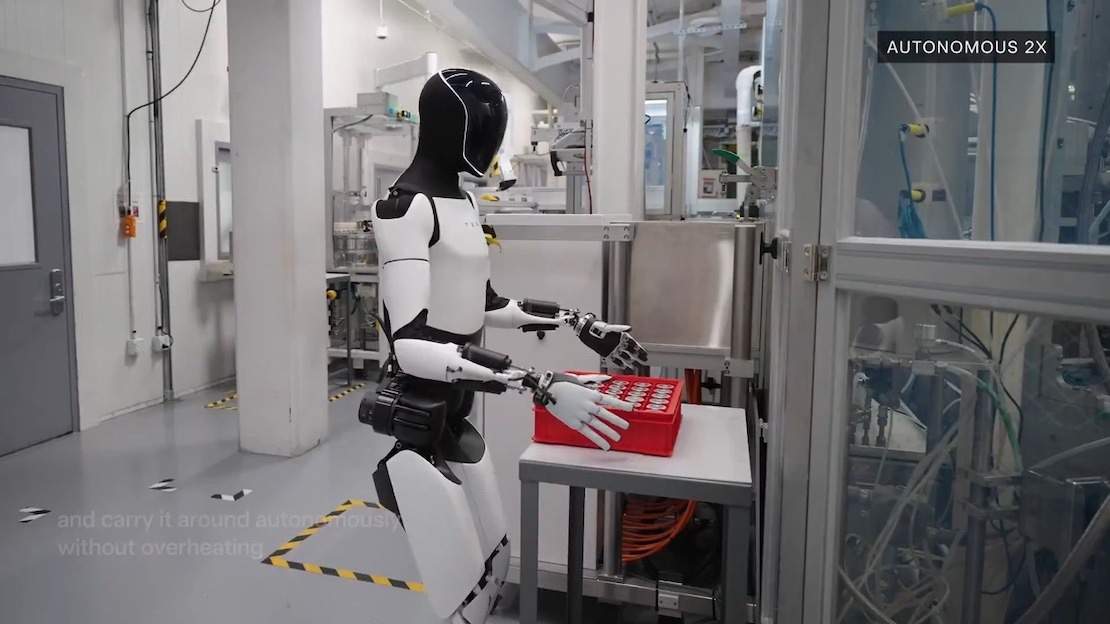 The humanoid robot Optimus hard at work. (Source: Tesla)
The humanoid robot Optimus hard at work. (Source: Tesla)
Most people still perceive humanoid robots as efficient "workers" capable of performing strenuous tasks. For instance, robots in warehouses can outperform human physical capabilities and efficiency, tirelessly repeating intense tasks; or like in the game "Detroit: Become Human," humanoid robots can serve as detectives or nannies, becoming invaluable assistants to humans. However, beyond these expectations, some robots are not just created for "functionality." Their value does not stem from work efficiency but from a different kind of "freedom"—a freedom beyond human reach, as seen in the emergence of the robot artist.
In contrast, human "freedom" is often limited by physiological needs, economic pressures, and various life stresses. These robots do not need to worry about where their next meal will come from, nor do they need to work to support a family, nor fret about life's challenges and pressures. They can freely explore creativity without the constraints of survival conditions, a liberty that is a unique advantage of robots. As we will discuss today with Ai-Da, her emergence not only showcases a new collaborative relationship between humans and machines but also challenges our traditional notions of art, creativity, and human agency, much like a collaborative AI.
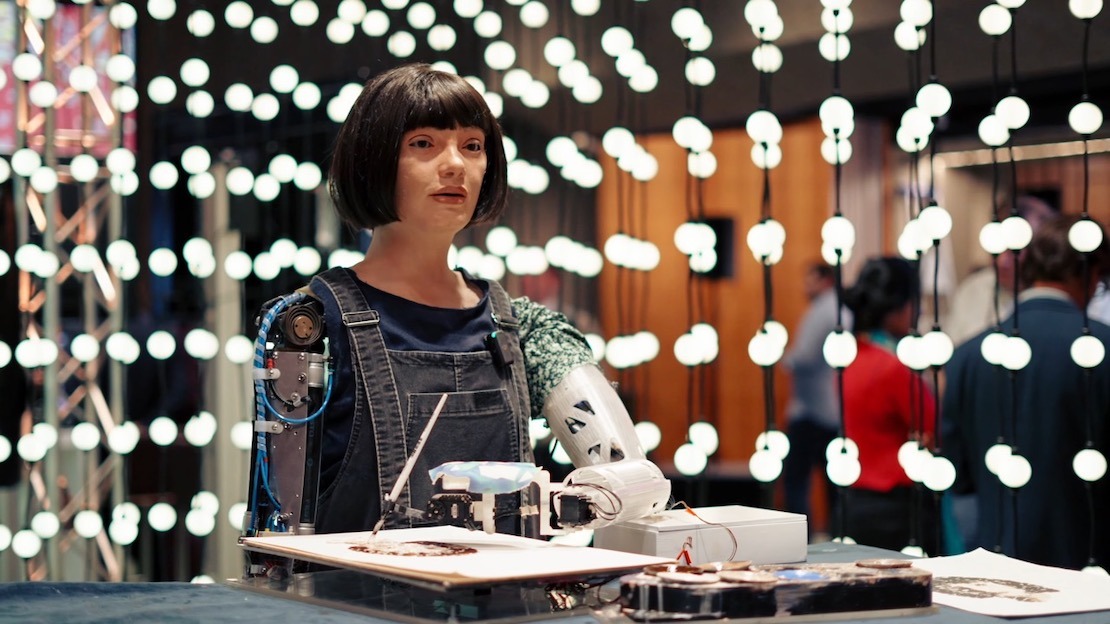 Ai-Da deeply engaged in painting. (Source: Ai-Da Robot)
Ai-Da deeply engaged in painting. (Source: Ai-Da Robot)
Ai-Da: The Birth of the First Humanoid Robot Artist
In 2019, British gallery director Aidan Meller initiated a groundbreaking art project aimed at creating an independent robot artist. To bring this idea to life, he collaborated with the robotics company Engineered Arts to design Ai-Da's appearance and structure, giving her realistic facial expressions and natural body movements. AI researchers from Oxford University joined the development team to design AI algorithms for Ai-Da, whose "eyes" are actually high-resolution cameras that capture and analyze the surrounding environment. Engineers from the University of Leeds crafted her precise bionic arms, ensuring she could delicately complete her paintings. This interdisciplinary team, combining art, robotics engineering, and AI technology, successfully created Ai-Da. Her name not only honors Ada Lovelace, the first computer programmer, but also derives from her creator, Aidan Meller.
 Ai-Da with her creator Aidan Meller. (Source: Ai-Da Robot)
Ai-Da with her creator Aidan Meller. (Source: Ai-Da Robot)
The Multi-Million Dollar Painting "A.I. God," Featuring Turing, Ada Lovelace, and Ai-Da Herself
In early November, Ai-Da's portrait "A.I. God." was auctioned at Sotheby's for $1.32 million, far exceeding the estimated $120,000 to $180,000. This expensive painting, however, besides this portrait of Alan Turing, the father of computer science, other portraits from the series were also displayed at this year's "AI for Good Global Summit," including Ada Lovelace, the first programmer, and her own self-portrait. This juxtaposition invites reflection and signifies that the portrait of Turing was not just a tribute but also positions herself as a continuation of technological evolution.
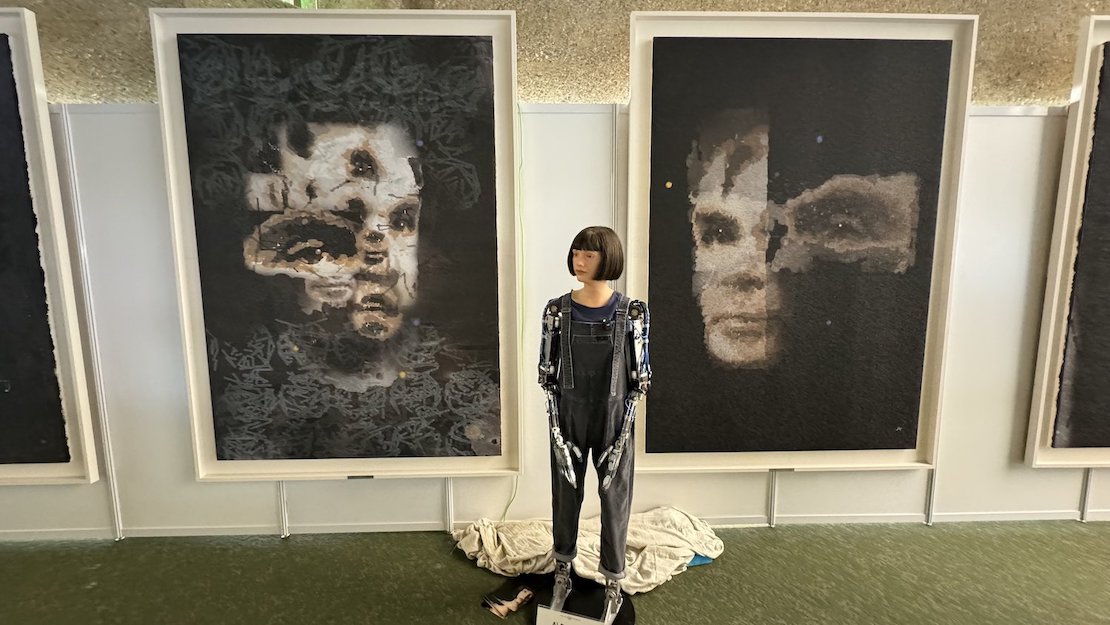 Ai-Da with her paintings. (Source: Ai-Da Robot)
Ai-Da with her paintings. (Source: Ai-Da Robot)
A Cyborg Revelation or Dual Objectification?
Ai-Da has caused a significant ripple in the art world, not only through her creations but also as a real-life artist, participating in numerous international forums and discussing her creative philosophy. As Aidan Meller hoped, Ai-Da blurs the lines between humans and machines, challenging our imaginations about creation. For him, Ai-Da also responds to Donna Haraway's "Cyborg Manifesto"—her unique hybrid identity and artistic practice allow us to reflect on our individual and collective relationships with technology, acting like a mirror that precisely reflects contemporary societal trends and behaviors. However, such interpretations also inevitably attract criticism.
Critics argue that Ai-Da's existence embodies a "dual objectification" issue: on one hand, her creative process is instrumentalized. Although called an "artist," she cannot freely choose themes, imbue meaning, or alter styles like human artists, but must mechanically output according to set algorithms. On the other hand, if Ai-Da's purpose is to explore human-machine integration, why give her the appearance of a young woman? This design fails to break free from stereotypes about women, instead deepening the passive, controlled image of women, making her a symbolized entity.
These controversies surrounding Ai-Da highlight how her so-called "freedom" is merely an illusion, perhaps even making her a dangerous "spokesmachine." As technology increasingly permeates artistic creation, are we inadvertently shaping new biases that could backfire on the essence and identity of artists?
Much like "Optimus," remotely controlled to showcase skills, we might still question whether Ai-Da's identity as an artist is merely a tool-driven, controlled outcome. Yet, compared to tasks like serving tea or mixing drinks, artistic creation seems to maintain a sacred and inviolable boundary. While Ai-Da’s multi-million-dollar paintings have sparked debates in the art world, the inclusion of such "artist" identities in the future of human-machine coexistence remains uncertain.
Her existence serves as a reminder: as technology brings boundless "creativity," we must reflect on whether the essence of art is a replicable process or a uniquely human experience. In the end, creation is not merely the execution of instructions—it is an expression of intent, emotion, and the exploration of humanity.

